nokia 4A0-M01 Exam Questions
Questions for the 4A0-M01 were updated on : Nov 21 ,2025
Page 1 out of 10. Viewing questions 1-15 out of 150
Question 1
Click on the exhibit.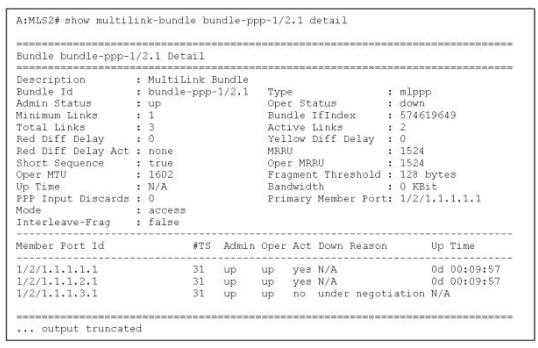
Which condition would cause the bundle Oper Status: shown?
- A. The bundle local and remote peer endpoint discriminators are mismatched
- B. The bundle remote peer Layer 3 (L3) interface is down
- C. The local and remote bundle MRRU values are mismatched
- D. The ML-PPP bundle member links have dropped below the minimum threshold
Answer:
B
Question 2
Click on the exhibit.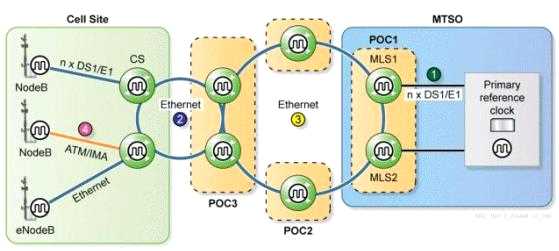
Given the topology shown:
Which timing solution would deliver time of day information to the NodeB connected to the
ATM/IMA link labeled 4 in the diagram?
- A. TDM Line Timing
- B. Adaptive clock recovery (ACR)
- C. Synchronous Ethernet
- D. Global Positioning System (GPS)
Answer:
D
Question 3
Click on the exhibit.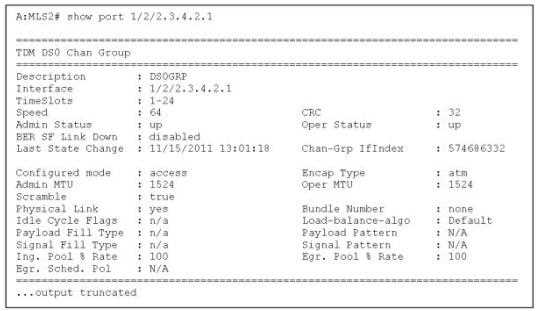
Given the following:
• On the OC-3 port, each provisioned channel group contains all available timeslots.
The command result illustrates which OC-3 port characteristic?
- A. On STS1-3, the second DS1 channel group in the fourth VTG is set for atm encapsulation
- B. On STS1-3, the second E1 channel group in the fourth VTG uses only the first 24 timeslots
- C. On STS1 -3, the second DS1 channel group i n the fourth TUG-2 is set for 32 timeslots
- D. On STS1-3, the second VT2 in the fourth TUG-2 is set for atm encapsulation
Answer:
A
Question 4
The 3rd Generation Partnership Project (3GPP) wireless standards cover which three technologies?
(Choose three.)
- A. 2G Global Systems for Mobile (GSM)
- B. 2G Code Division Multiple Access (CDMA)
- C. 3G Universal Mobile Telecommunications System (UMTS)
- D. 3G Evolution-Data Optimized (EV-DO)
- E. 4G Long Term Evolution (LTE)
- F. 3G High Rate Packet Data (HRPD)
Answer:
A, C, E
Question 5
Which statement describes an instance where a control word would be required in an aPipe service?
- A. ATM cell mode is used to map multiple virtual circuits into a single aPipe service
- B. The aPipe service transports concatenated cells from an entire virtual path
- C. The service carries just the cell payload and Equal Cost Multipath (ECMP) is used in the transport
- D. A cell mode service must map different ATM virtual circuits to a service based on Quality of Service (QoS) profiles
Answer:
C
Question 6
Click on the exhibit.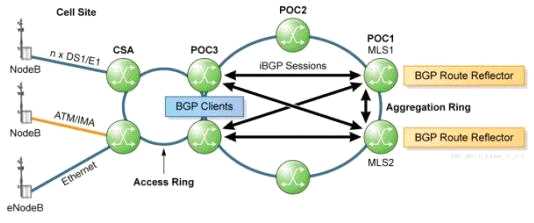
Given the topology shown:
Which Border Gateway Protocol (BGP) feature must be configured on MLS1 and MLS2 to allow them
to act as iBGP route reflectors?
- A. BGP peer tracking
- B. Cluster IDs
- C. BGP Route Reflection
- D. Autonomous System (AS) Number
Answer:
B
Question 7
In a Mobile Service Provider (MSP) network, which device aggregates traffic for delivery to the
control elements?
- A. BTP Aggregation Gateway (BG)
- B. BTP Termination Device (BT)
- C. MSP Aggregation Gateway (MG)
- D. MSP Termination Device (MT)
Answer:
C
Question 8
Which three are components found in the backhaul transport Mobile Telephone Switching Office
(MTSO) functional area? (Choose 3)
- A. 2G Base Station Transceiver (BTS)
- B. LTE Radio Network Controller (RNC)
- C. EV-DO Radio Network Controller (RNC)
- D. MSP Aggregation Gateway (MG)
- E. GSM Base Station Controller (BSC)
- F. Ethernet over SONET (EoS) UNI
Answer:
C, D, E
Question 9
Click on the exhibit
Given the diagram and the following information:
• Virtual Private Routed Network (VPRN) 5 spans the routers Point of Concentration (POC) 3-1 and 3-
2 and the Multilevel Switch (MLS) routers MLS1 and MLS2
• Multiprotocol Border Gateway Protocol (MP-BGP) is configured and operational
• Pseudowire status is signaled, as shown, on the ePipe/VPRN spoke Service Distribution Points
(SDPs)
What might you configure on the services illustrated to hold down the primary VPRN NodeB
loopback interface static route in case of an intermittent or rapid spoke SDP failure and recovery?
- A. Set port hold down timers on the CSA to POC3-1 link
- B. Configure Label Distribution Protocol (LDP) Sync on the VPRN static routes
- C. Enable BGP next-hop tracking in the VPRN BGP peer groups
- D. Set a revert timer value on the CSA ePipe 50 endpoint
Answer:
A
Question 10
Click on the exhibit.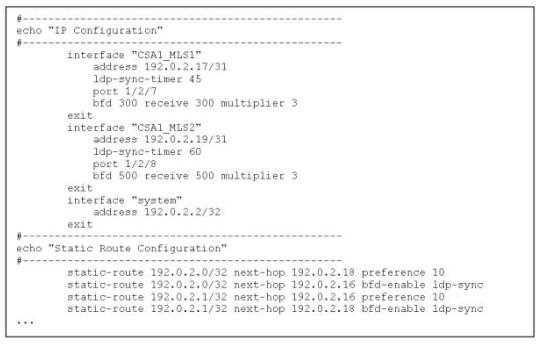
Given the configuration shown, and the following condition:
• The next hop interface on the preferred path to prefix 192.0.2.0/32 failed
• Label Distribution Protocol (LDP) is enabled on the interfaces
How long does the router wait before it moves traffic to the secondary route for this prefix?
- A. 900 ms
- B. 1.5 seconds
- C. 45 seconds
- D. 60 seconds
Answer:
A
Question 11
Click on the exhibit.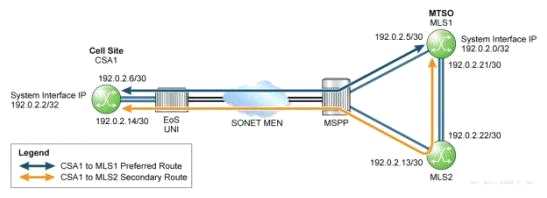
You wish to configure a preferred and a secondary static route on CSA1. targeting the MLS1 system
interface. The preferred route must forward packets over the preferred route path as shown in the
diagram. Given the following:
• BFD must be enabled on the preferred route
• BFD is configured on the interfaces
• The BFD interface transmit and receiver timers are 500 ms
• The BFD interface multiplier is 3
• The CSA1 router must choose the preferred route in normal operations
Which command example correctly configures the PREFERRED static route on CSA1?
- A. configure router static-route 192 0.2.0/32 next-hop 192.0.2.0 bfd-enable
- B. configure router static-route 192.0.2.0/32 next-hop 192.0.2.5 bfd-enable
- C. configure router static-route 192.0.2.5/30 next-hop 192.0.2.5 500 receive 500 multiplier 3
- D. configure router static-route 192.0.2.0/32 next-hop 192.0.2.13 bfd-enable precedence 10
Answer:
B
Question 12
Click on the exhibit.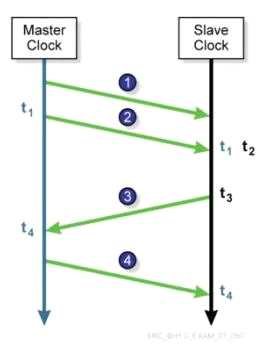
Each numbered item, 1, 2, 3, and 4, represents a message exchanged between an IEEE
1588v2/Precision Time Protocol (PTP) v2 master and slave. With which message does the master
pass its t1 timestamp to the slave clock at item 2?
- A. Announce
- B. Delay_request
- C. Delay_response
- D. Sync
Answer:
D
Question 13
Which two wireless technologies has the 3rd Generation Partnership Project 2 (3GPP2) developed?
(Choose two.)
- A. 2G Global Systems for Mobile (GSM)
- B. 2G Code Division Multiple Access (CDMA)
- C. 2.75G Enhanced Data Rates for GSM Evolution (EDGE)
- D. 3G Universal Mobile Telecommunications System (UMTS)
- E. 3G Evolution-Data Optimized (EV-DO)
- F. 4G Long Term Evolution (LTE)
Answer:
B, E
Question 14
Click on the exhibit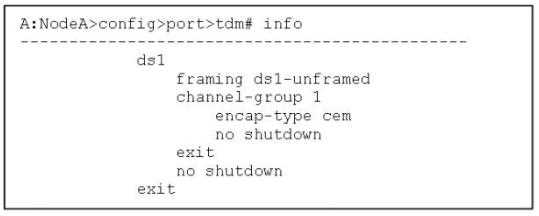
Given the configuration shown and the following information:
• Each service packet transports eight frames.
When used in a cPipe service, what is the payload size for the port configuration shown?
- A. 8 bytes
- B. 24 bytes
- C. 92 bytes
- D. 256 bytes
Answer:
C
Question 15
Click on the exhibit
Given the diagram shown, and the following information:
• Configured on CSA1 and the two MLS routers is redundant ePipe 10
• Interchassis Backup Pseudowires (ICB-PW) provide a path of last resort to the Customer Edge (CE)
Service Access Points (SAPs)
• A Multichassis Link Aggregation Group (MC-LAG) protects the CE access ports
• The primary spoke Service Distribution Point (SDP) has failed
How does the ePipe service ensure that traffic continues flowing to the CE devices?
- A. CSA1 moves traffic to the secondary spoke SDP, where it crosses to endpoint SAP and travels through ICB PW spoke 3:100toMLS1
- B. CSA1 moves traffic to the secondary spoke SDP and the MLS1 MC-LAG control protocol switches the active LAG member to MLS2
- C. CSA1 moves traffic to the secondary spoke SDP, where it enters endpoint SPOKE and travels through ICB PW spoke 3:10toMLS1
- D. CSA1 moves traffic to the secondary spoke SDP, where MLS2 drops the traffic on ingress since the configuration shown is incorrect
Answer:
A